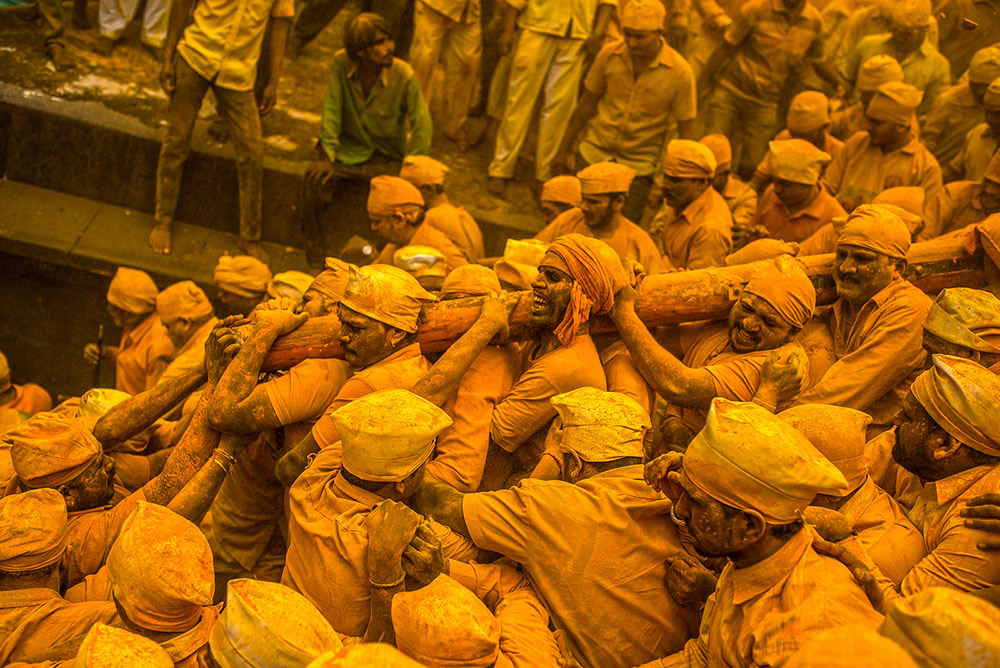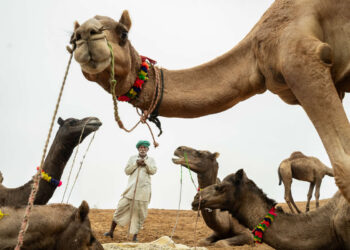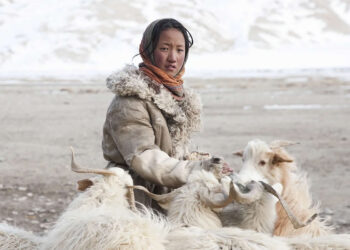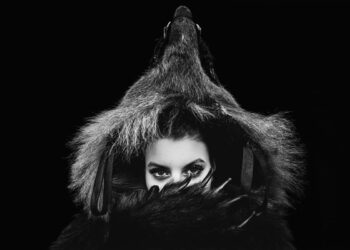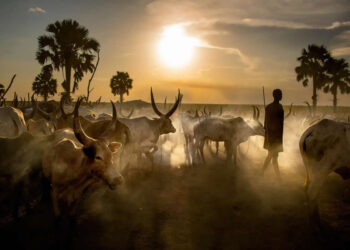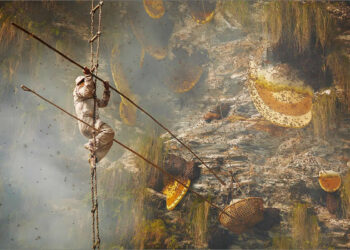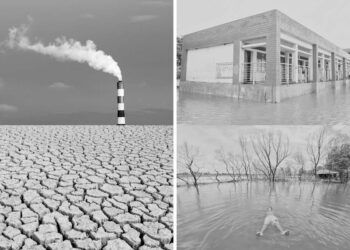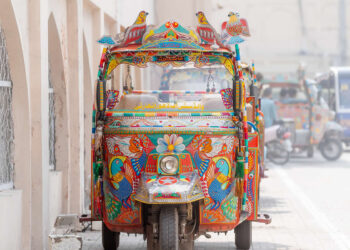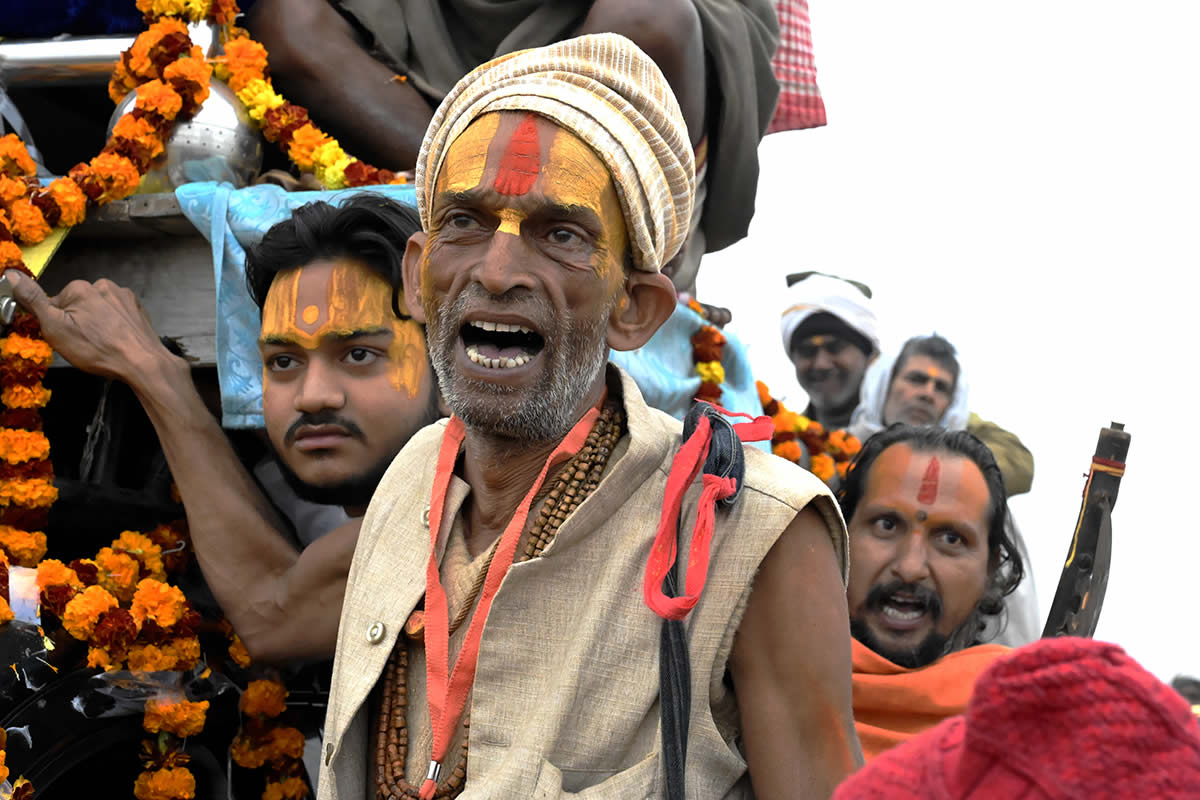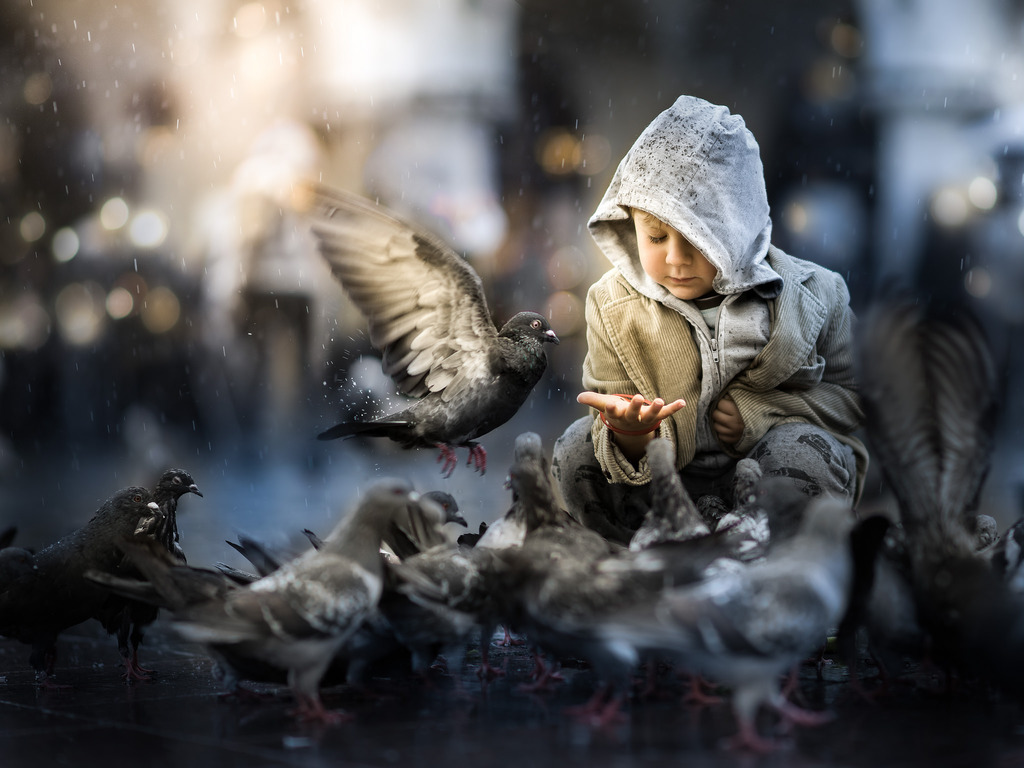Jejuri
Jejuri is a city in the district of Pune located in the west of Maharashtra. It is well known for its myths of their god Khandoba and also has a temple dedicated to him. Khandoba is believed to be a form of the God Shivshankar. There is an abundance of culture flowing through the streets of Jejuri, and the highlights of those are the subjects of my photographs. Jejuri is a name that has evolved from Jaijai Nagri to Jejepuri and finally to Jejuri. It is believed that the hill was given the name Jaiyadri after two demons called Mani and Malla were defeated. Jaiyadri basically means the hill where victory is achieved.
‘Yelkot yelkot jai malhar, Sadanandacha yelkot”, is the phrase that is bellowed while showering people and idols with the ‘Bhandara’. It is a mixture of turmeric and dry coconut. The devotees chant the name of Khandoba and spread its colour to their hearts content. It is so yellow that it looks like gold. Hence, Jejuri is also referred to as ‘Sonyachi Jejuri’ or ‘Jejuri clad in gold’.
There are twenty programs that take place every year at Jejuri and all of them have their own cultural influence governed by the day that is present. There are festivals like Chaitra purnima, Ganpuja, Guru Purnima, Somwati amwasya, Shrawan pornima, Ghatasthapana, Dussehra, Champa Shashti, Paush Purnima, Mahashivratri etc. I have been working at Jejuri since 2017. I have been collecting information about these all festivals and Somavati Amavasya is the main focus of my work in this story. Somavati festival is celebrated on the ‘Parvani Snan Palkhi Sohla’.
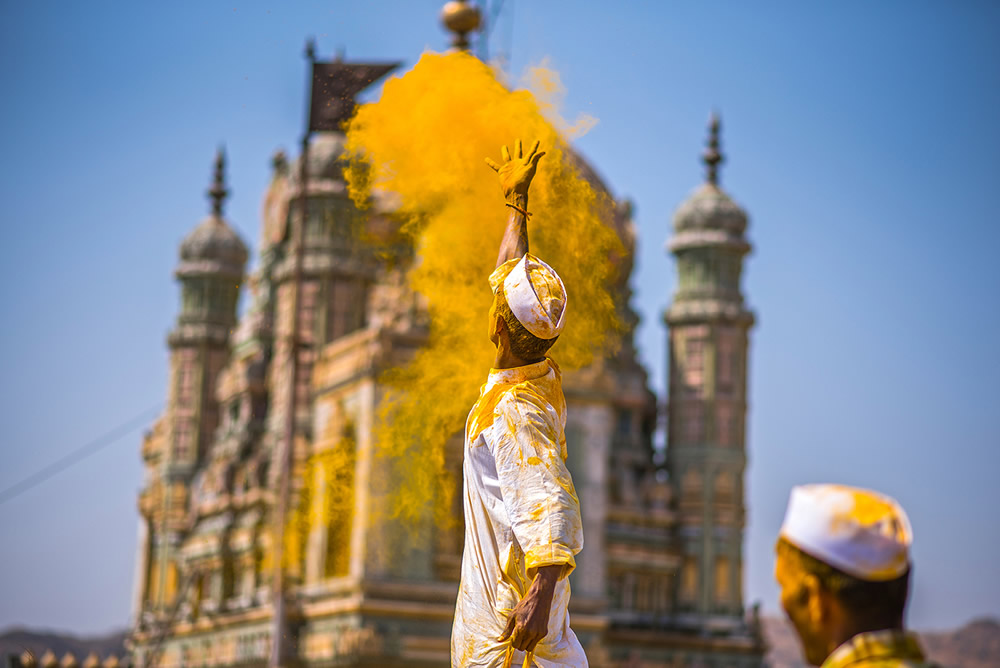
Somvati Amavasya
Somavati Amavasya is the festival that takes place on a no moon’s day that falls on Monday, which is called ‘Somvar’ in the regional dialect. In the course of this festival, the idol of the Lord Khandoba is moved and is taken along with lakhs of pilgrims hailing from various states to the Karha River. Here, the idol is bathed and various religious rites are performed and the idol is taken back to its original position atop the hill. The distance that is covered from the temple to the river and back is around 14 kms. It is very important for the idol to be back to the temple before the full moon ends. The devotees celebrate this festival with enthusiasm.
This day is believed to be the most auspicious for bathing in the river water. On a fixed time, Khandoba’s Palkhi which is the carrier of their god, leaves the fort of Jejuri in order to bathe the god in the river Karha and the surroundings are bathed in a golden hue due to the turmeric in the air. The congregation travels around town for around 7 kms and settles near the Karha river where the priests bathe in the holy water near Rambhai Visava. While returning from this function, the Palkhi stops at various temples and finally rests at Janai temple nearJejuri fort. People from a lot of castes including Maratha, Dhangar, Muslim, Kolhati, Beldar, Chambhar, Gosavi, Joshi and lot more participate with equal intensity in this festival. Devotees originating from all castes are encouraged to participate with no discrimination.
When the idol is brought back to the temple, a circumambulation takes place before they are finally set in their original place. After this deed is done, there is a custom of giving ‘Pagar’ to the devotees. ‘Pagar’ means salary or payment for a work that is completed. In order to complete this, the devotees are paid with grains from the sacks present in the halls of their god. The devotees believe that if the holy grains that they received as payment are mixed with their grains at home, they will never face a shortage of grains.
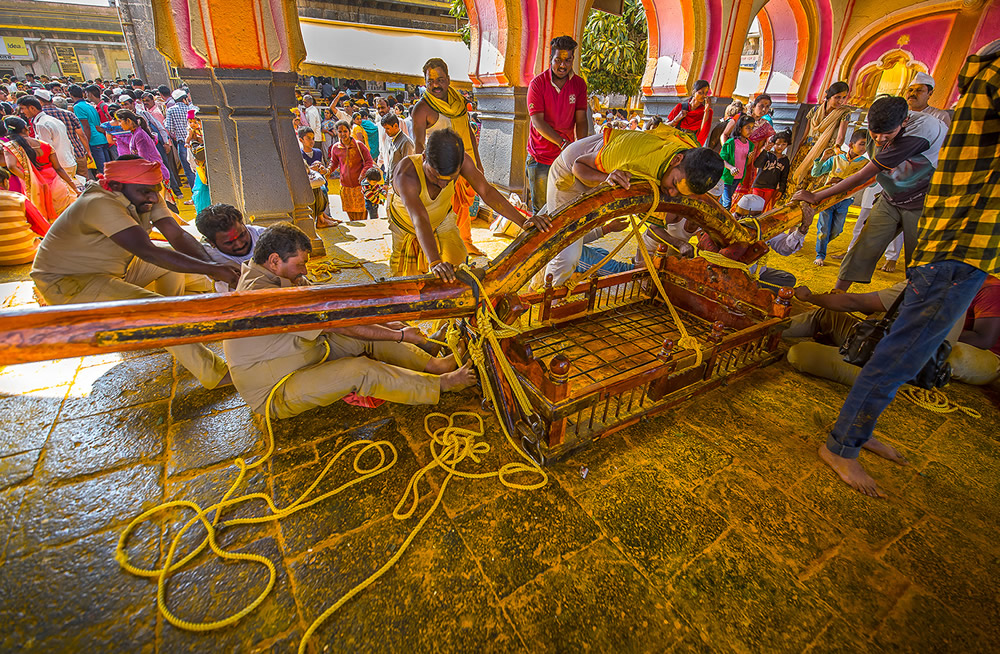
When I was clicking this photo for my photo story, I had asked a devotee out of curiosity about the weight of the carriage of the God. He replied to me in such a way that it got embedded in my mind. He said that there is no instrument made till date which measures the weight of God, so there is no way of knowing the weight of God.
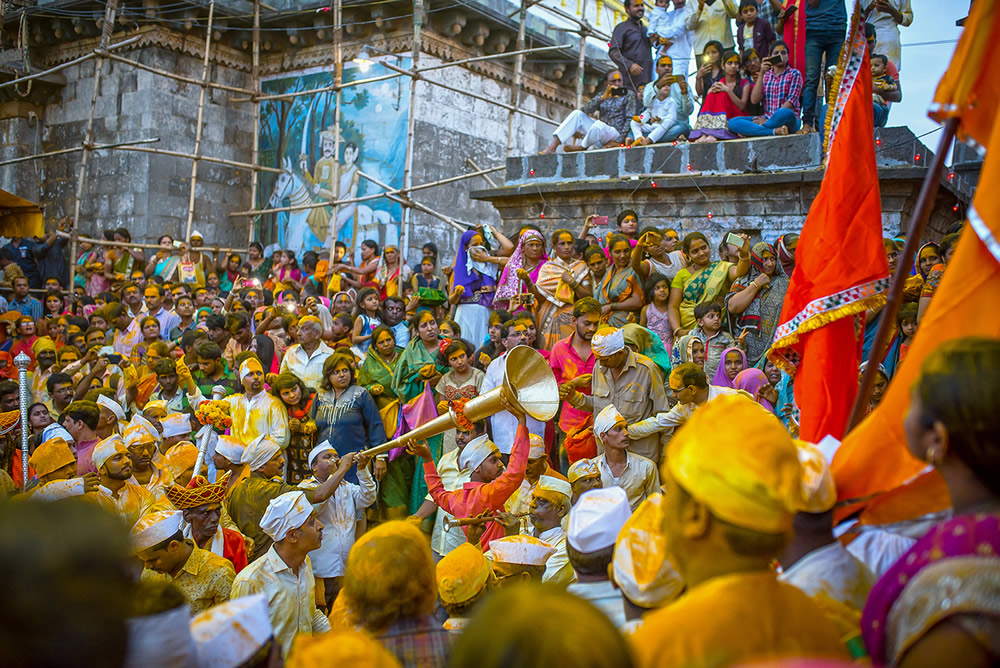
A loud horn is blown and gunshots are fired in the air which heralds the commencement of the Palkhi procession.

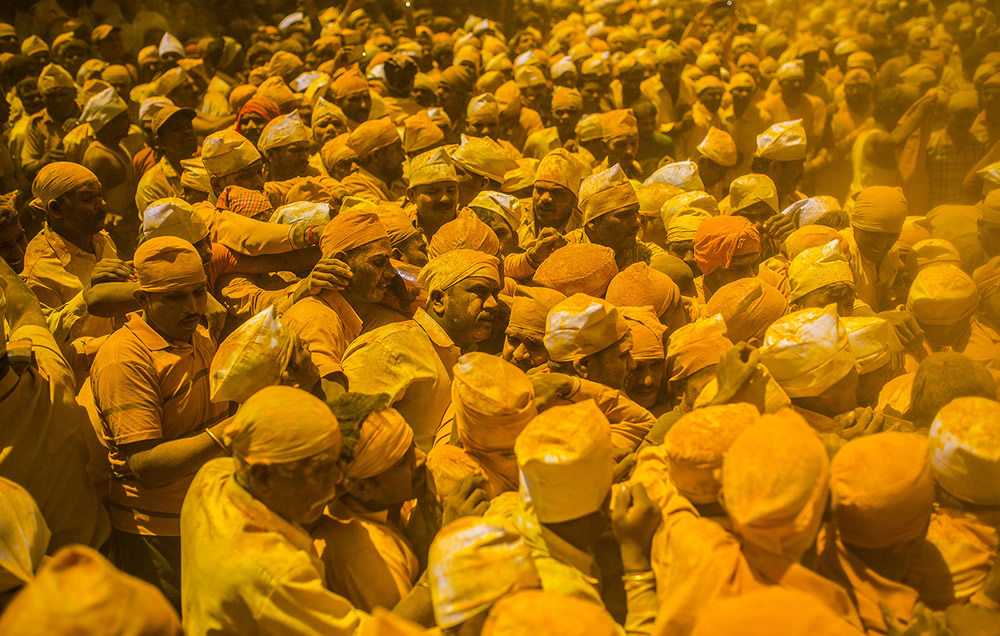
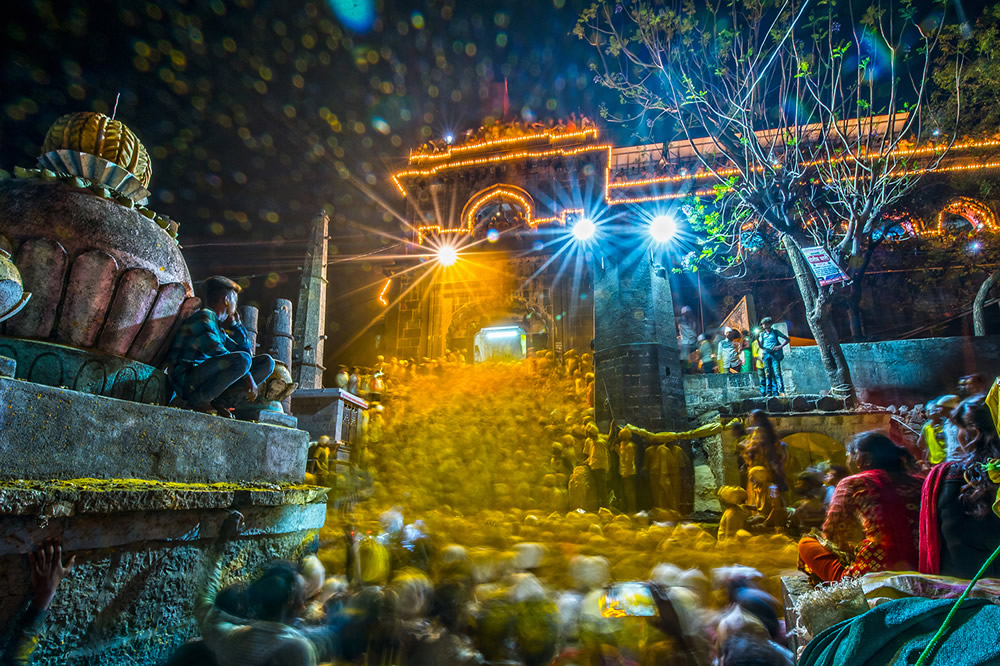
This is a moment captured when the Palkhi exits through the main door of the fort.
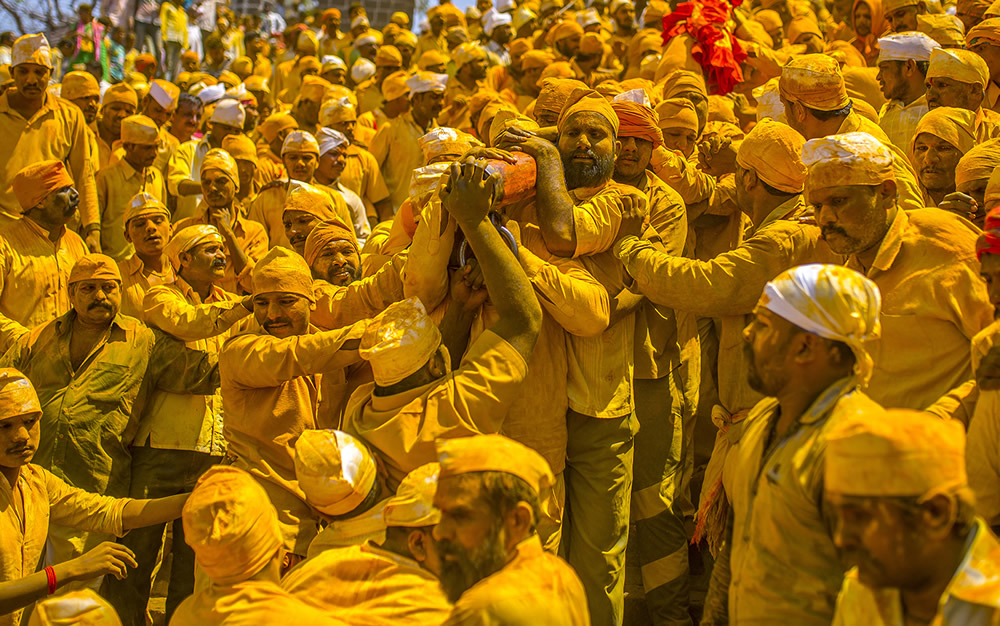
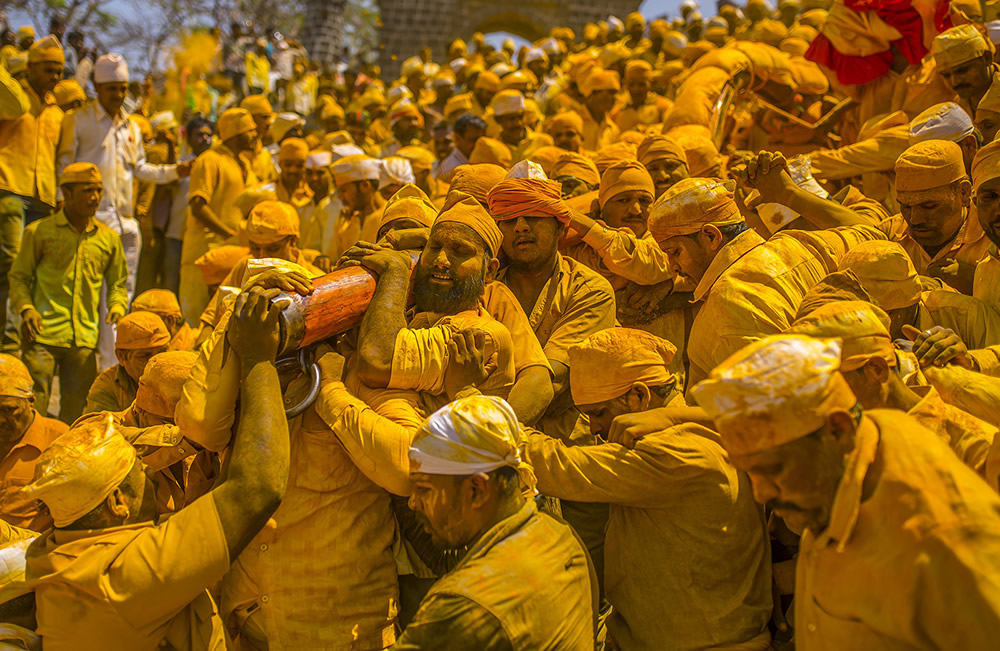
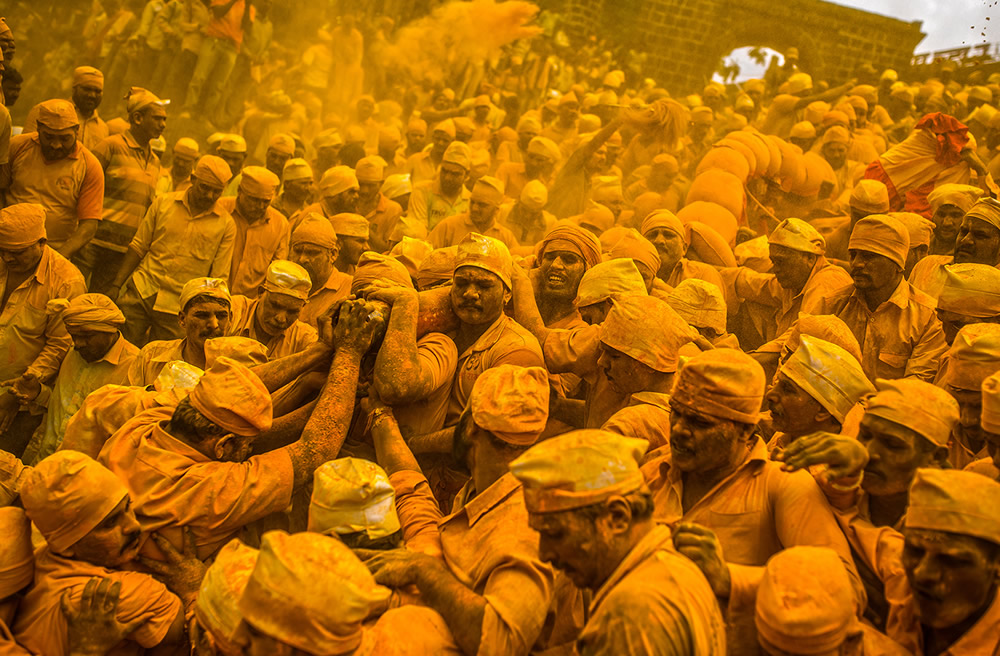
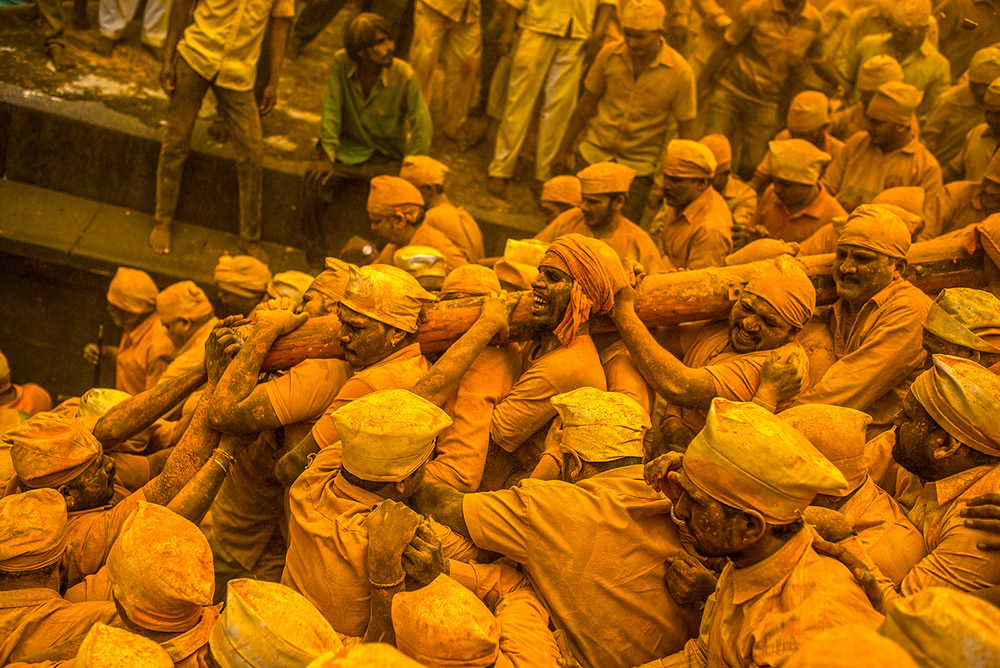
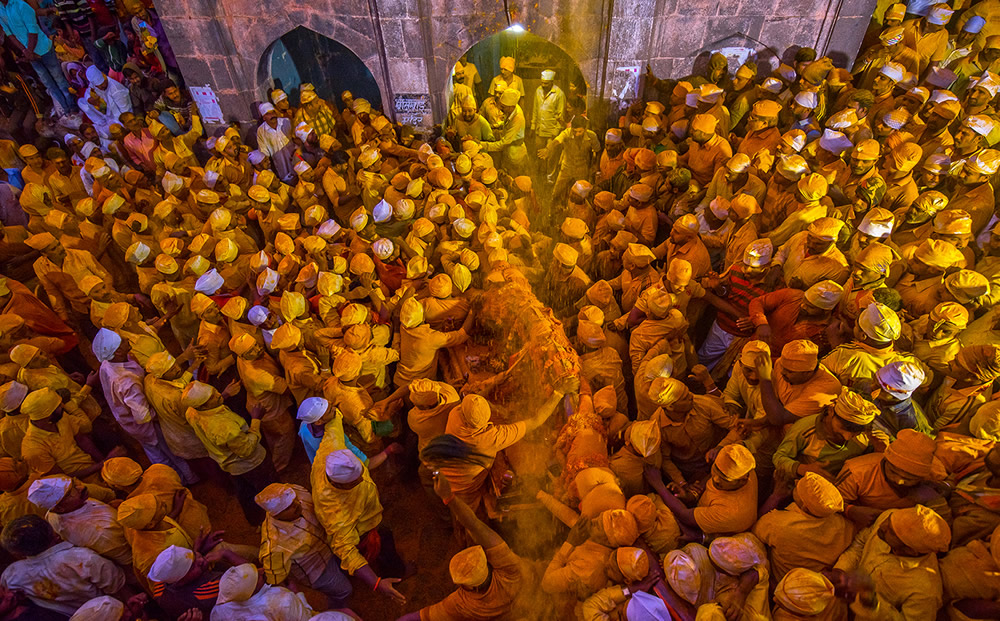
When the procession travels down from the fort, it reaches the temple of Banai Devi who is believed to be the second wife of Lord Khandoba
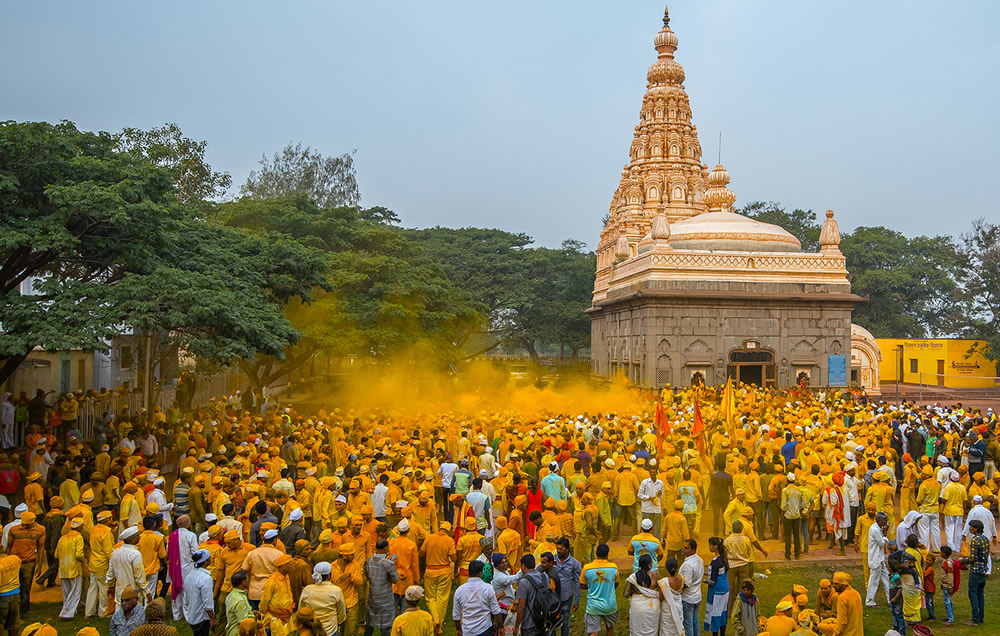
This is the shrine of Sardar Malhar Rao Holkar who was a huge devotee of his Lord Khandoba. This shrine was built with the purpose of a meeting place for the God and his devotees. The Palkhi travels through gardens of tamarind to reach this location.
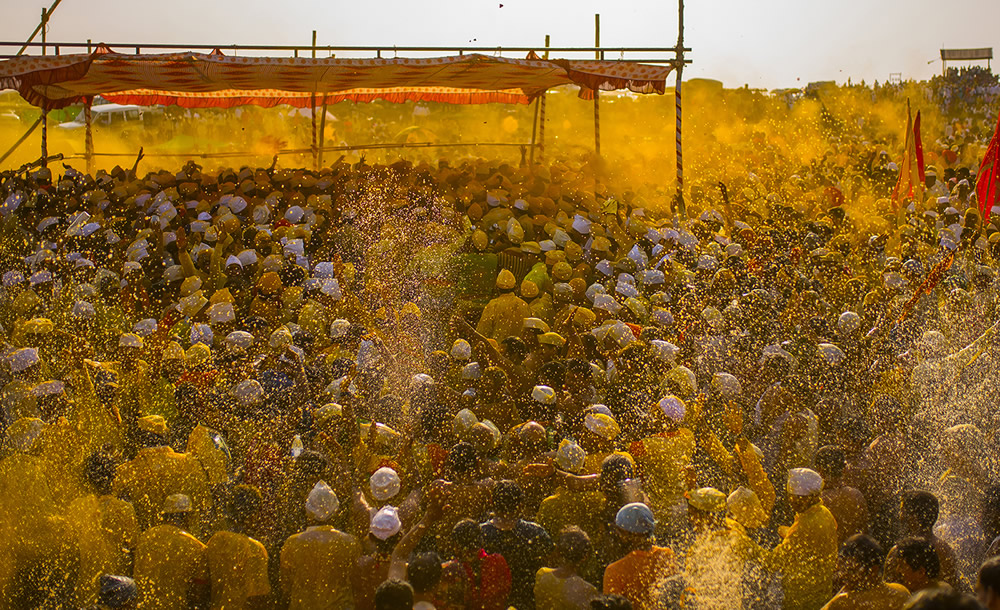
Palkhi halts at Rambhai Visava for bathing the idol at the Karha river. The devotees participate by showering water too.
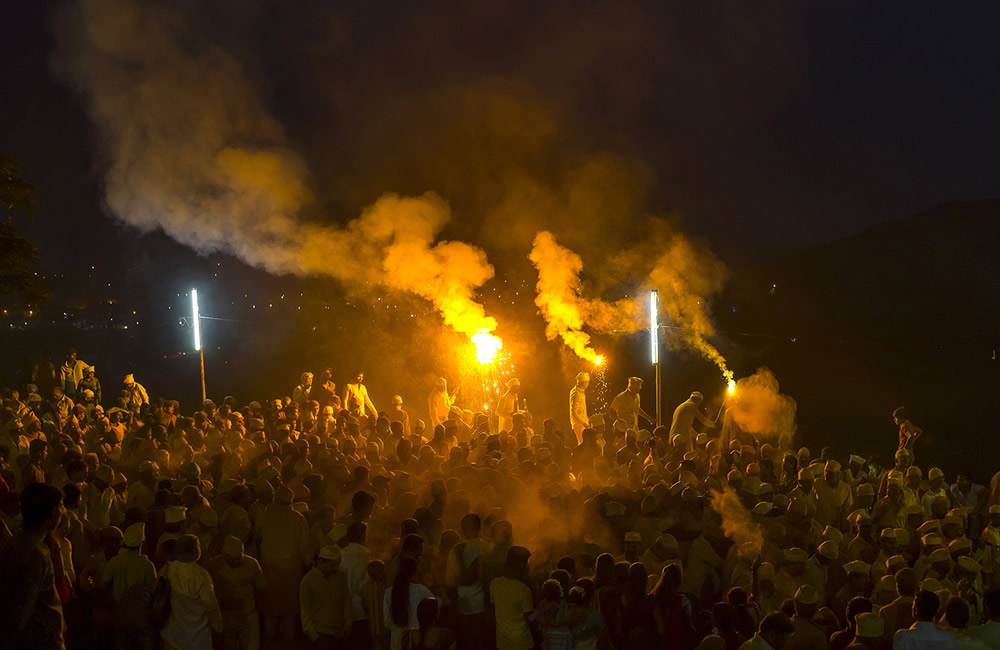
A moment captured when the Palkhi comes back to the fort.
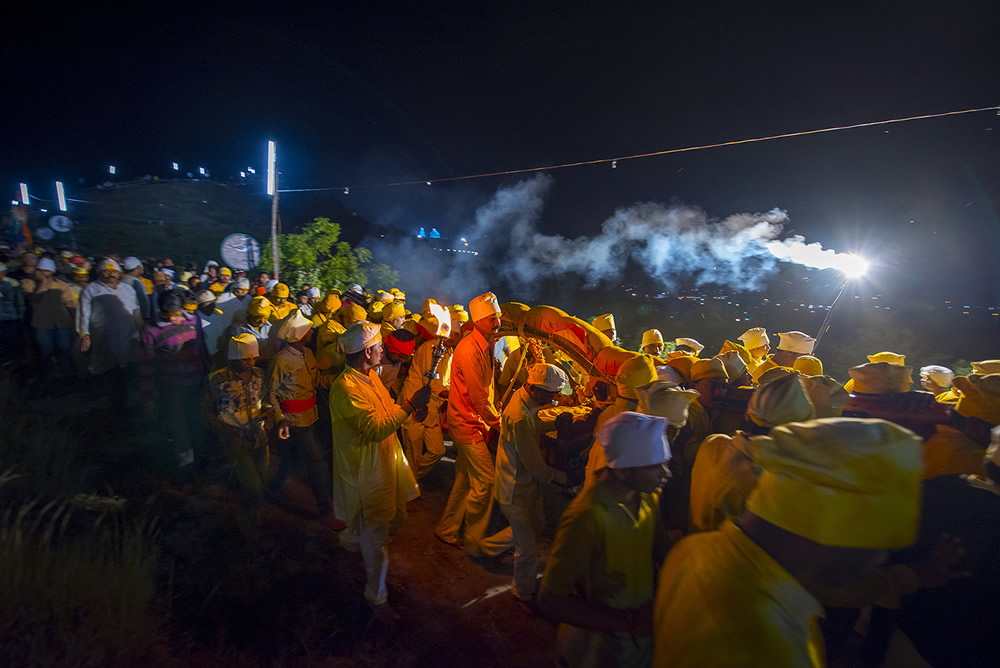
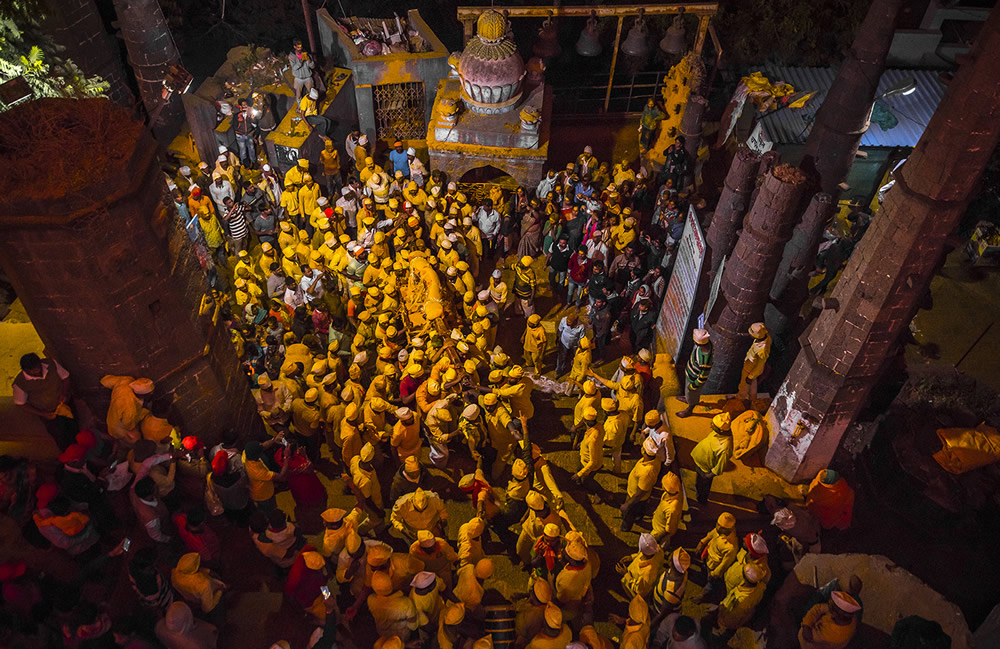
The procession reaches the main gate of the fort.
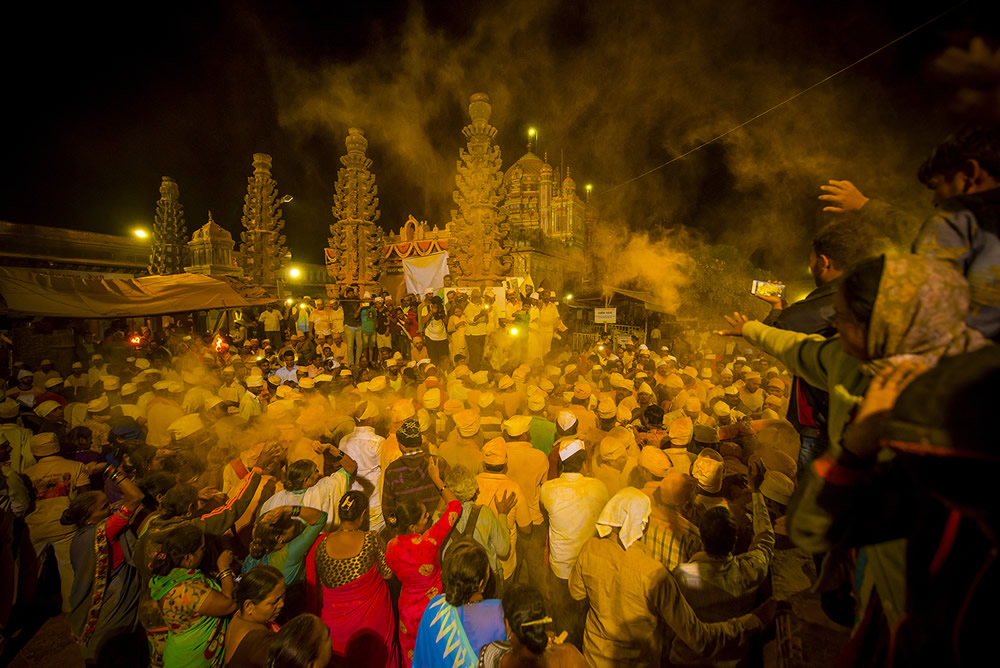
Chabuk Marne:
Another one of the peculiar actions is using the ‘Chabuk’ or the whip on oneself. The humble devotees believe that the whipping will cure them of the sins that they have committed before. They believe that during the time of punishment, the God Khandoba himself casts his presence in their body and the devotees do not feel any pain or suffering while receiving the punishment.
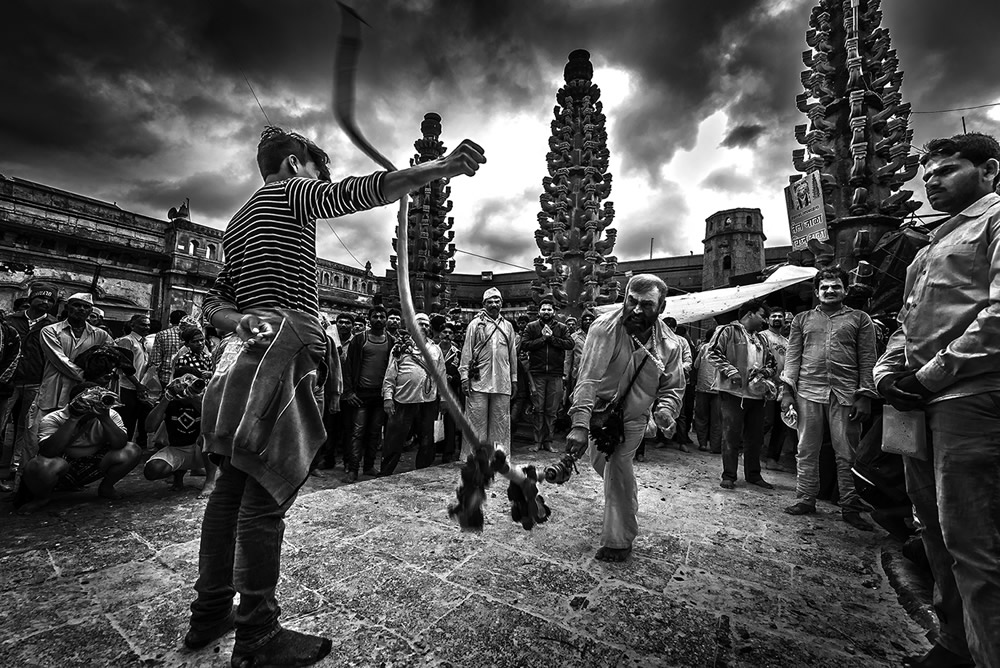
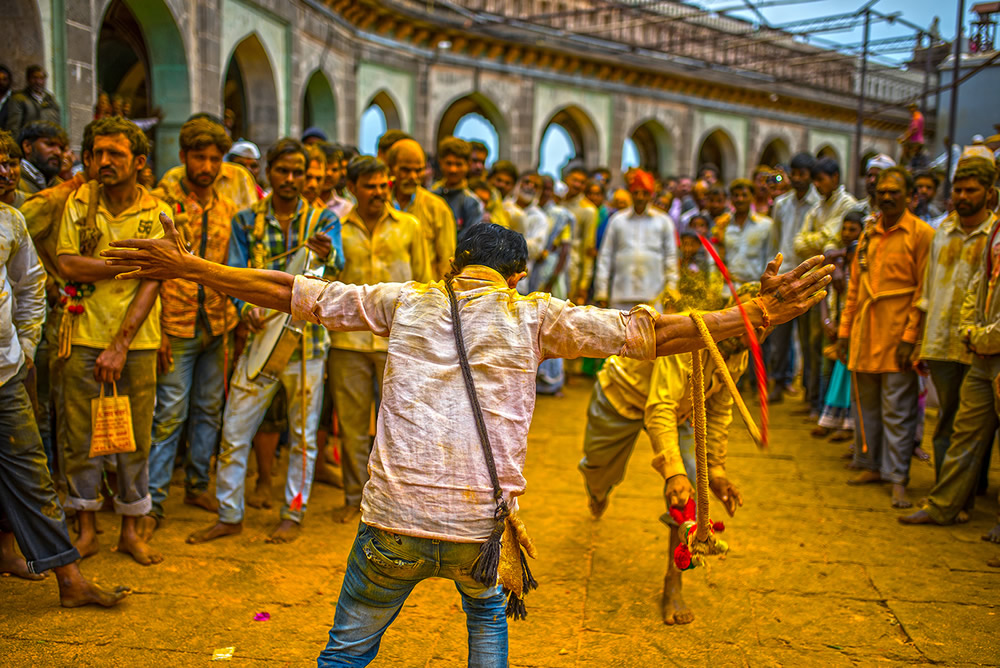
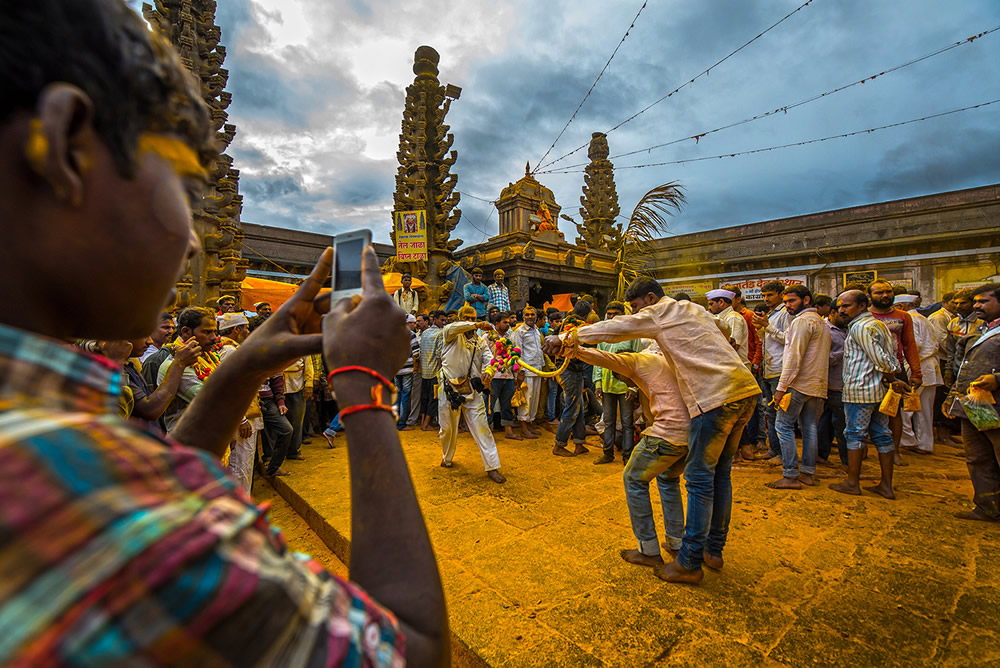
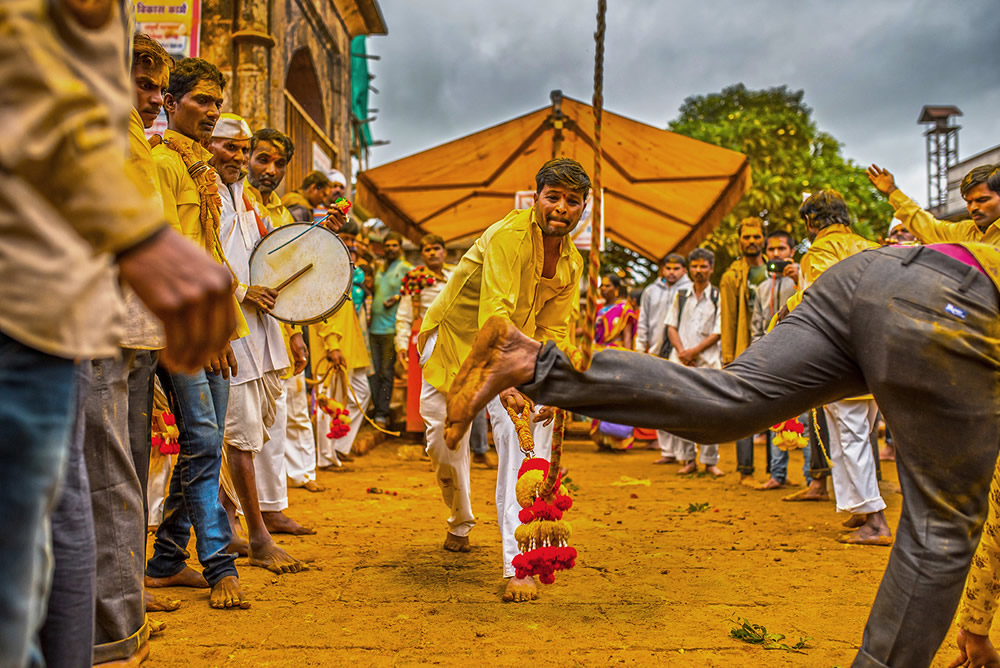
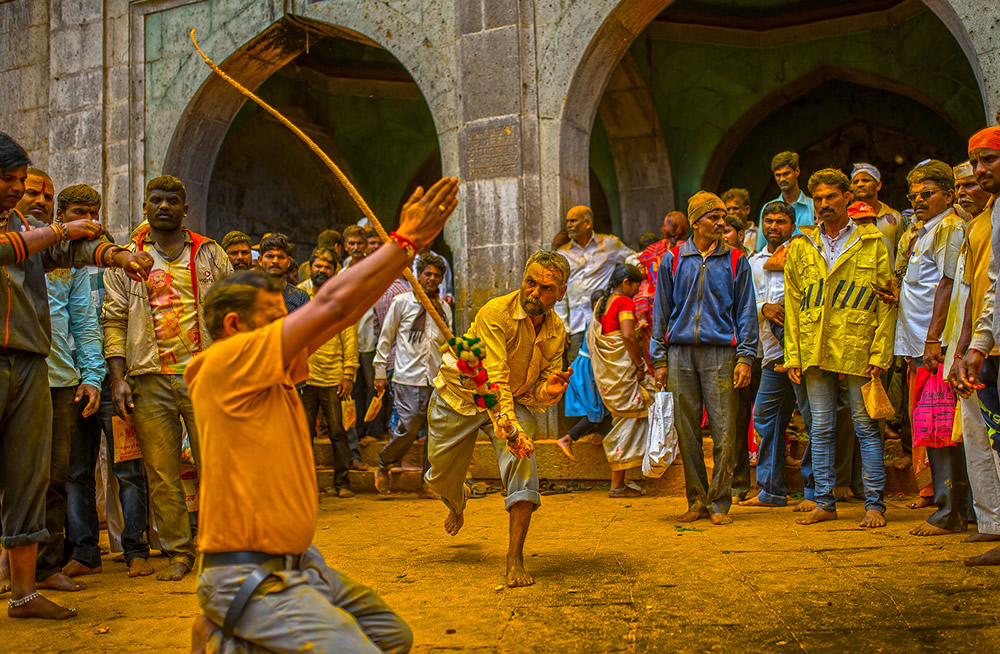
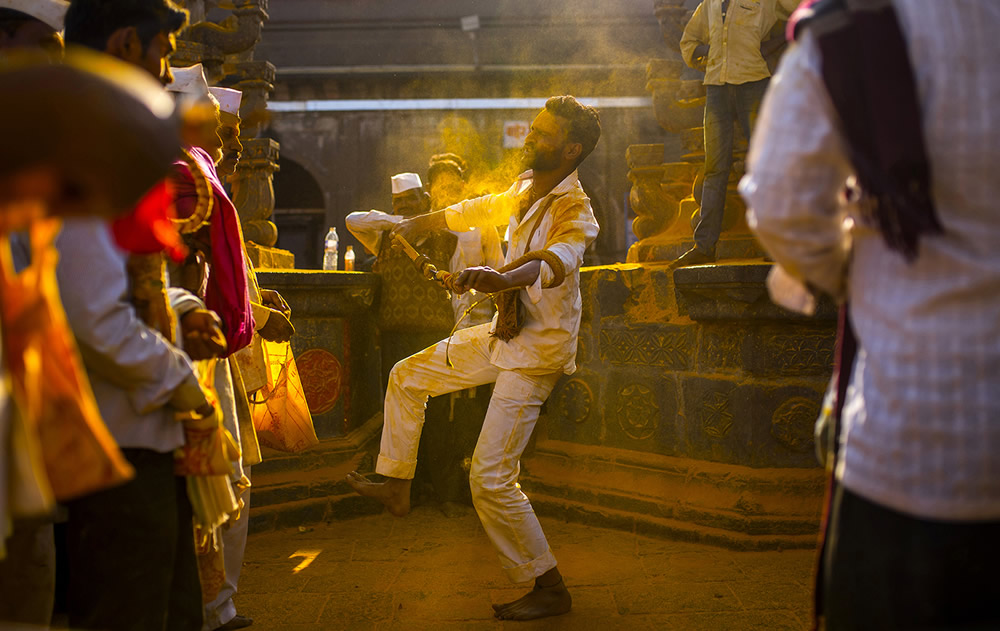
Tradition of break the chains (Langar Todne)
There is a peculiar act performed during the procession of the God from the temple to the river, which is called ‘Langar Todne Pratha’ which basically means the breaking of chains. During this act, the devotee takes an iron chain and breaks it by attaching it to a rock and hitting it repeatedly while chanting a phrase of Malhar. This is believed to rid the devotee of any past misgivings just like the chain breaking.
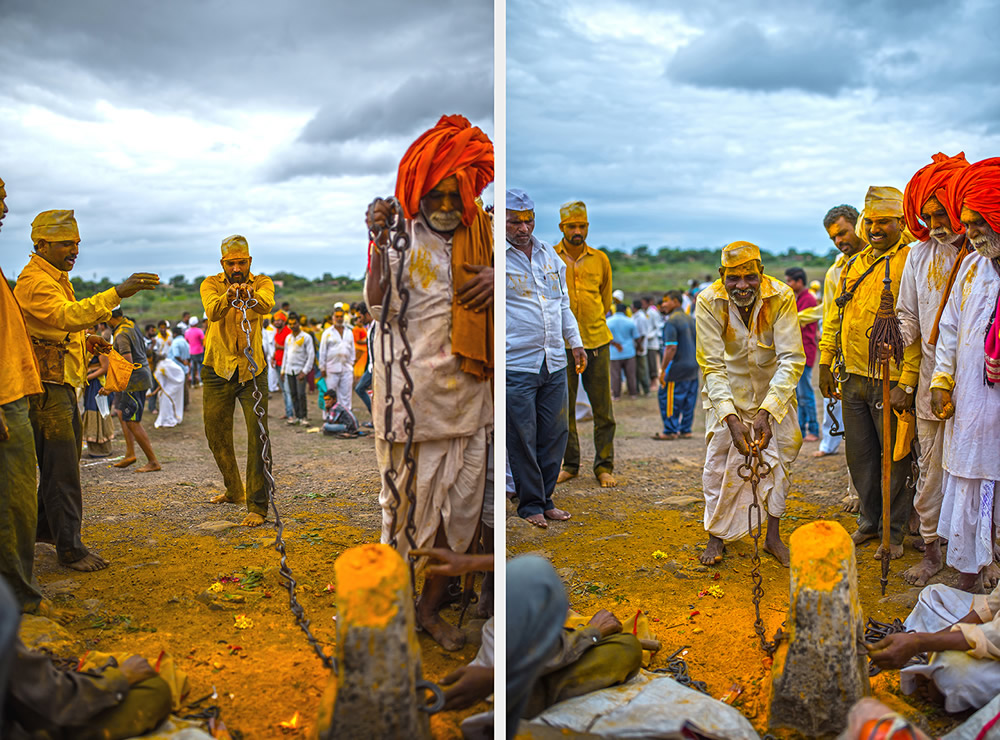
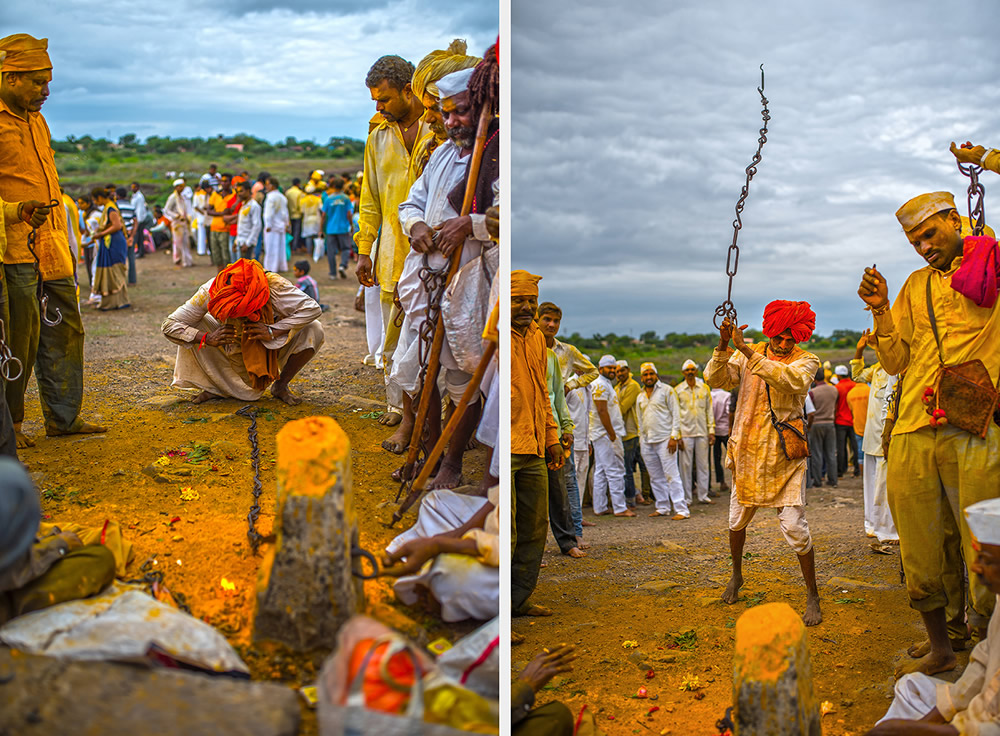
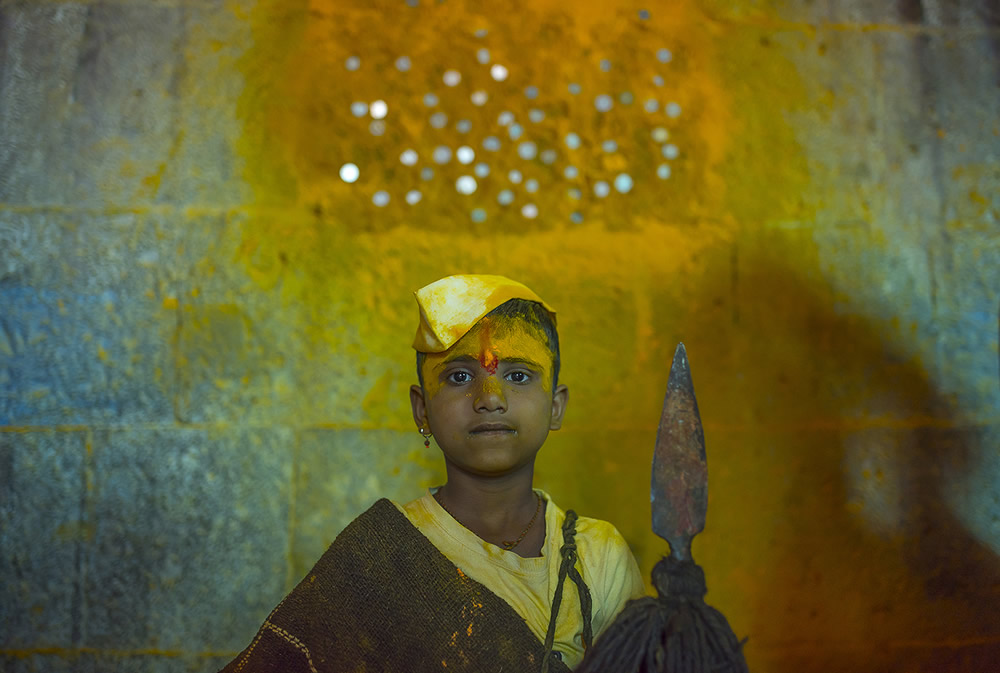
There is a belief of the devotees that if you stick a coin on the wall while thinking about your heart’s desire, and if the coin sticks to the wall, then it will get fulfilled.
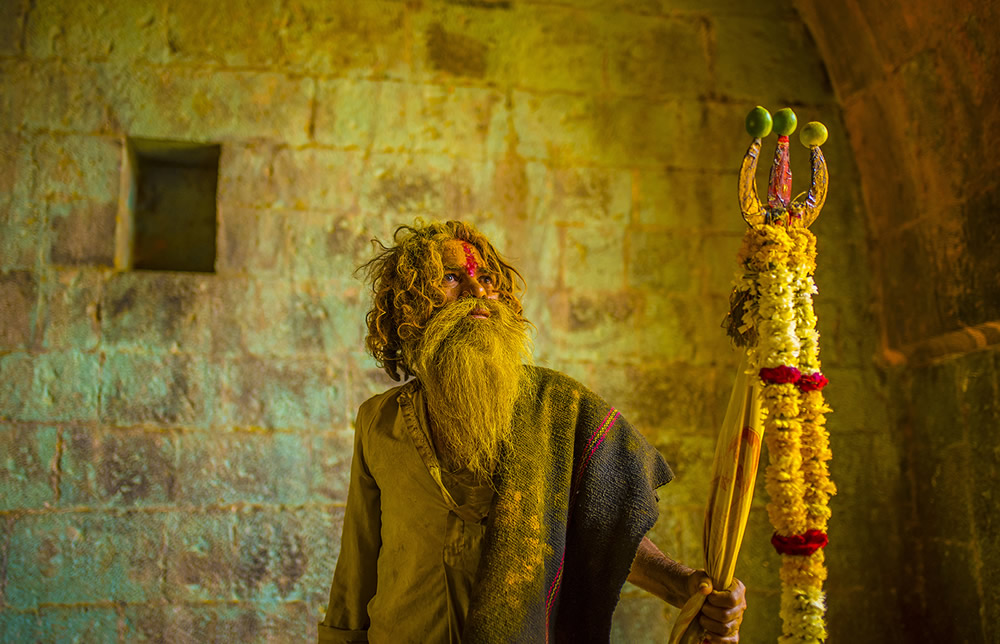
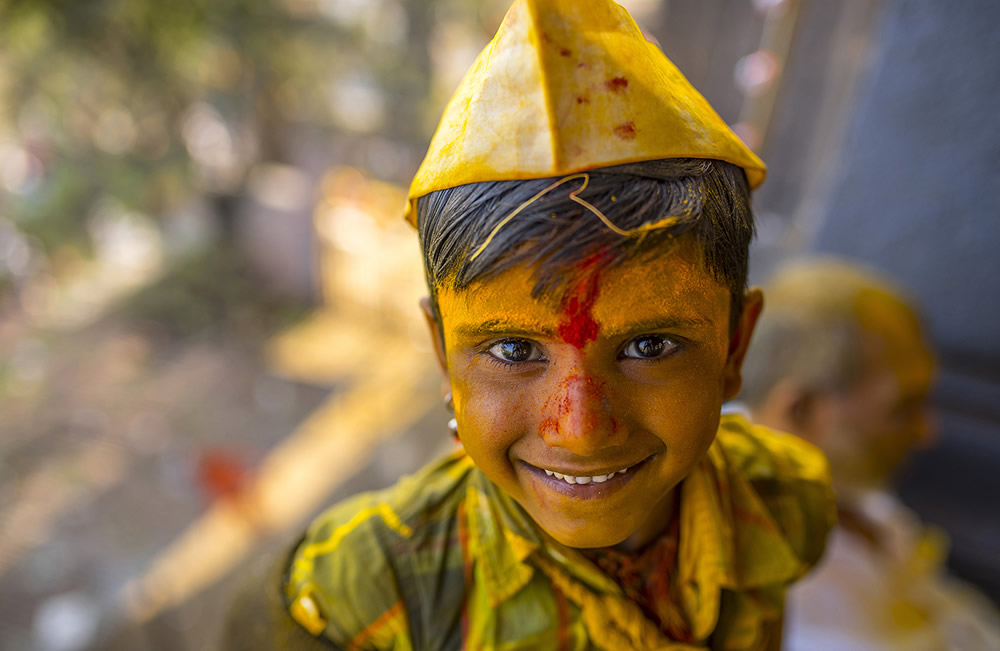
This photo is of a boy I came across during my first photo shoot in Jejuri. I had forgotten my precious camera bag in a temple and this boy, with his incredulous genuineness and innocence, followed me and returned this bag to me. He is a Khandoba for me now. His innocence is reflected in his smile itself. I still visit him every time I go to Jejuri and help him in any way I can.
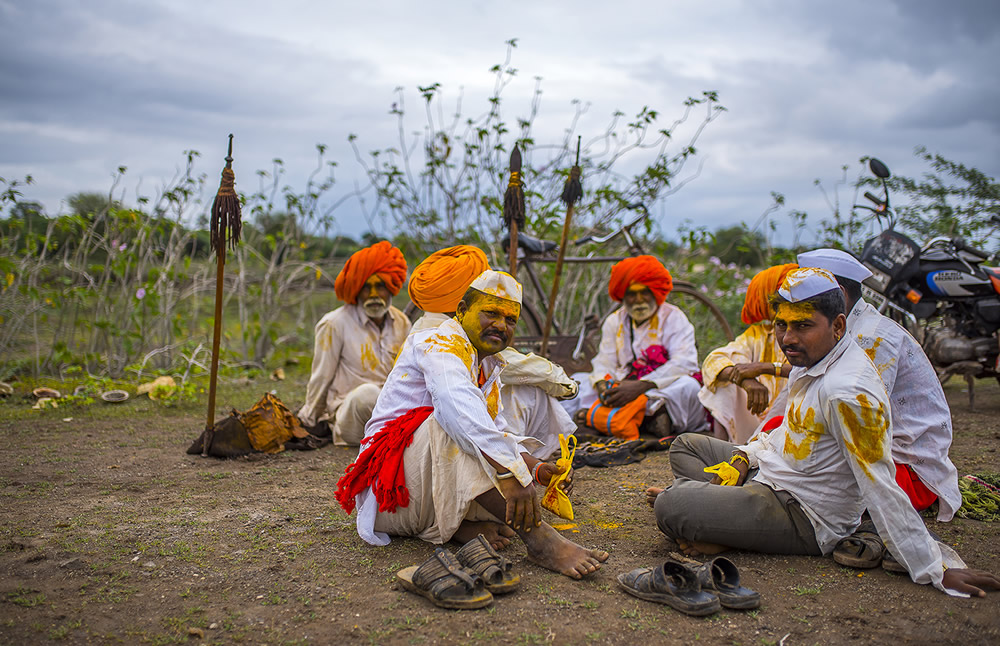
The devotees of Dhangar community dressed in their traditional attire.
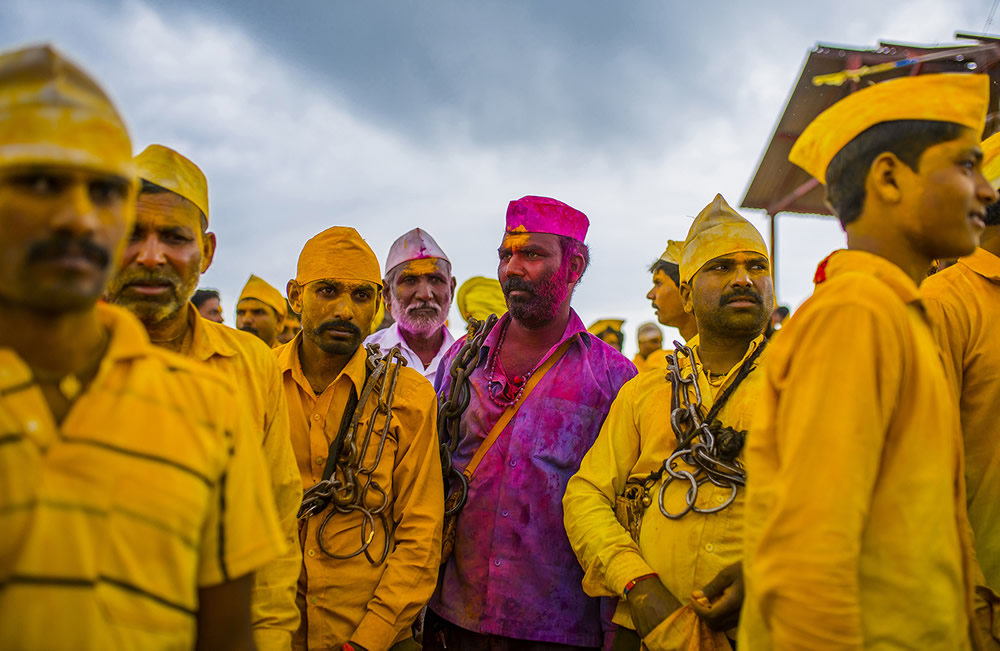
Traditional Lamp (Diwati Budali)
There are various other unique procedures involved in this festival, one of which is the fact that there are no electric bulbs or any form of electrical equipment used in the festival. The devotees carry a thick wooden pole and light it on fire in order to have visibility. The devotees have a special name for this phenomenon which is “Divati Budali”. Here, ‘Divati’ means the fire and ‘Budali’ is the oil which one has to pour on the fire in order for it to keep burning properly. The devotees believe that by lighting that fire, ones problems from the past will be burned along with the fire. There are devotees who follow this tradition for a lot of years in the footsteps of their family before them.
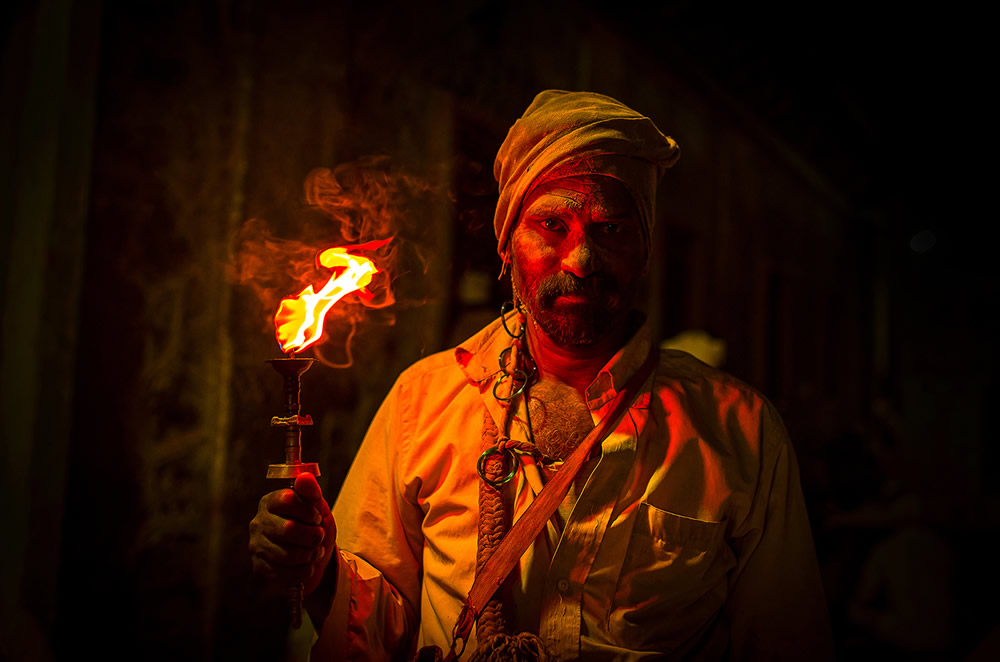
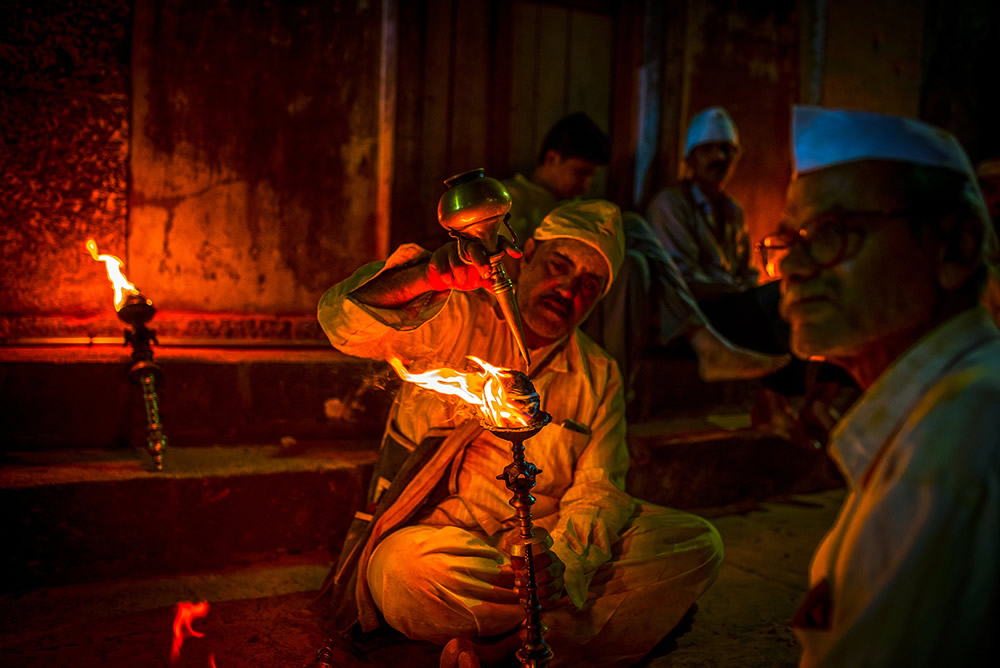
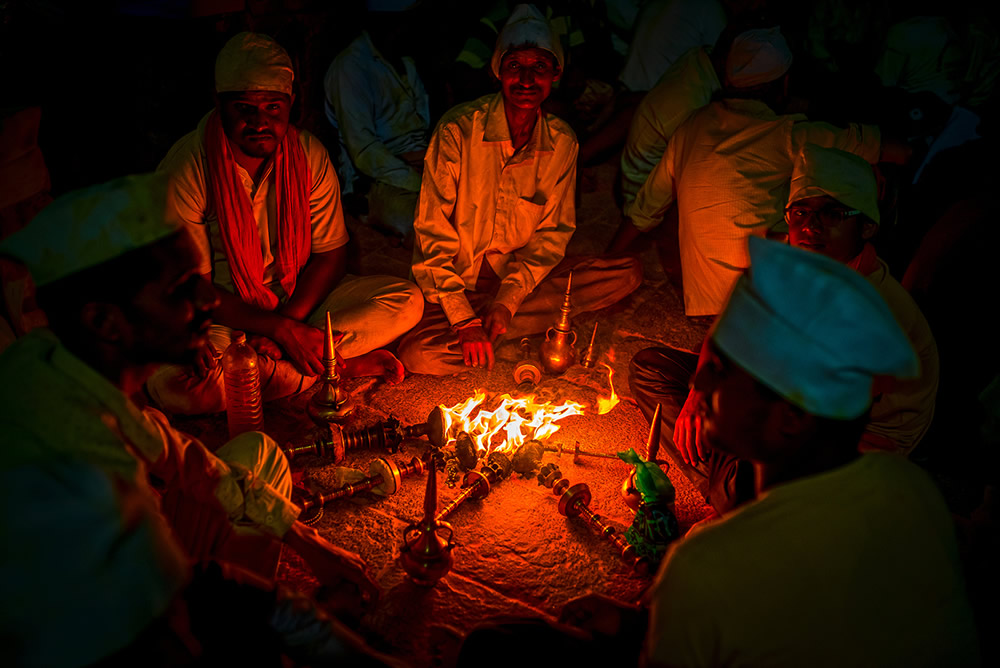
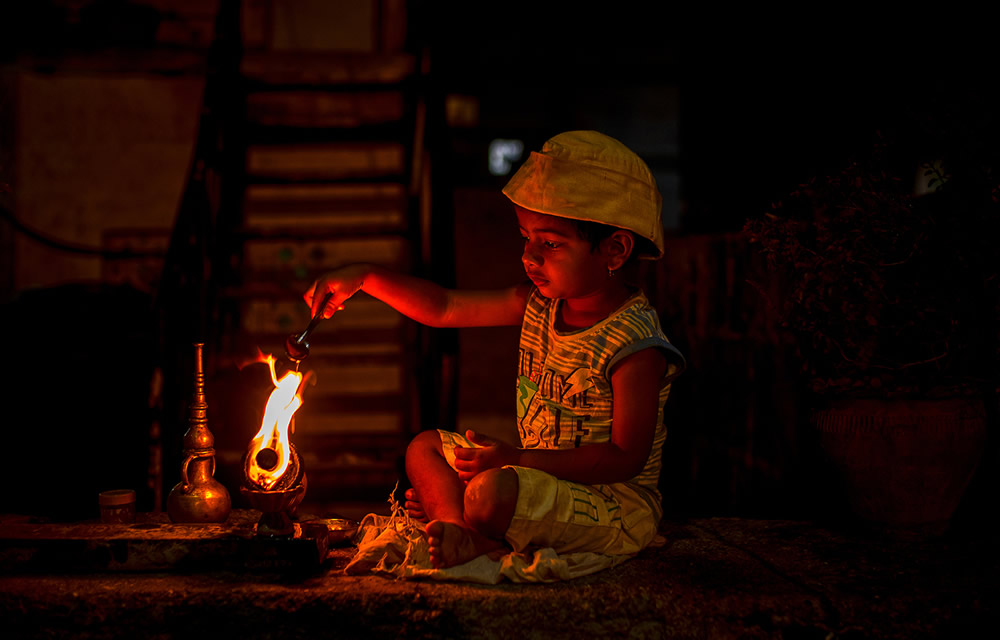
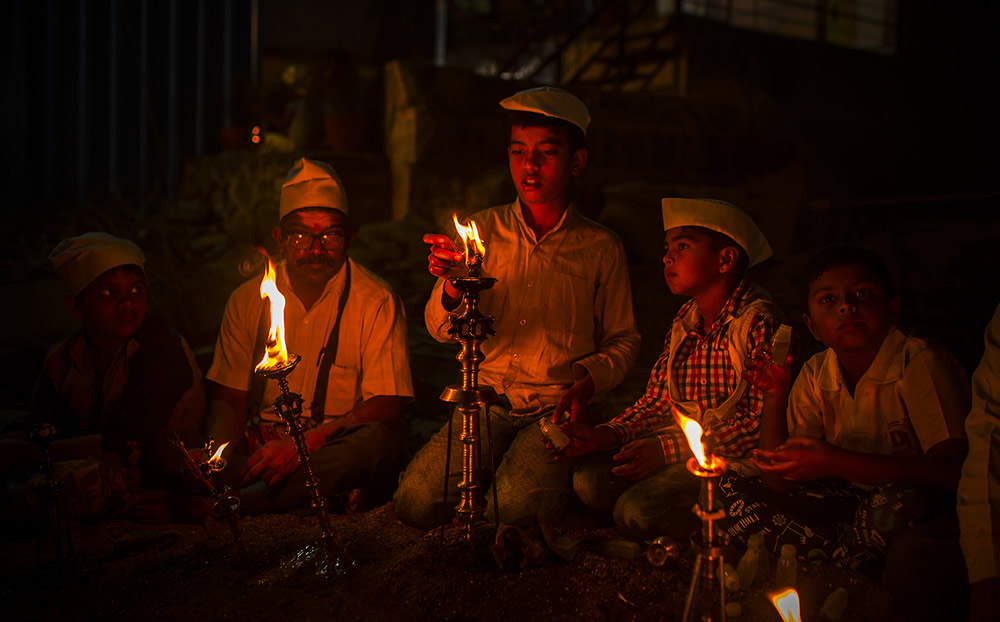
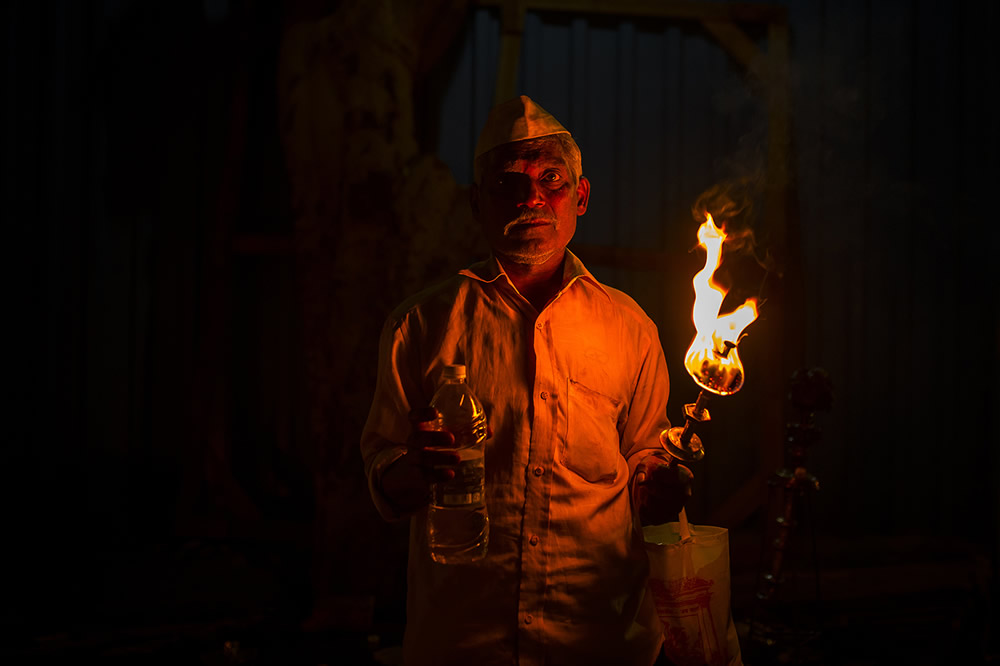
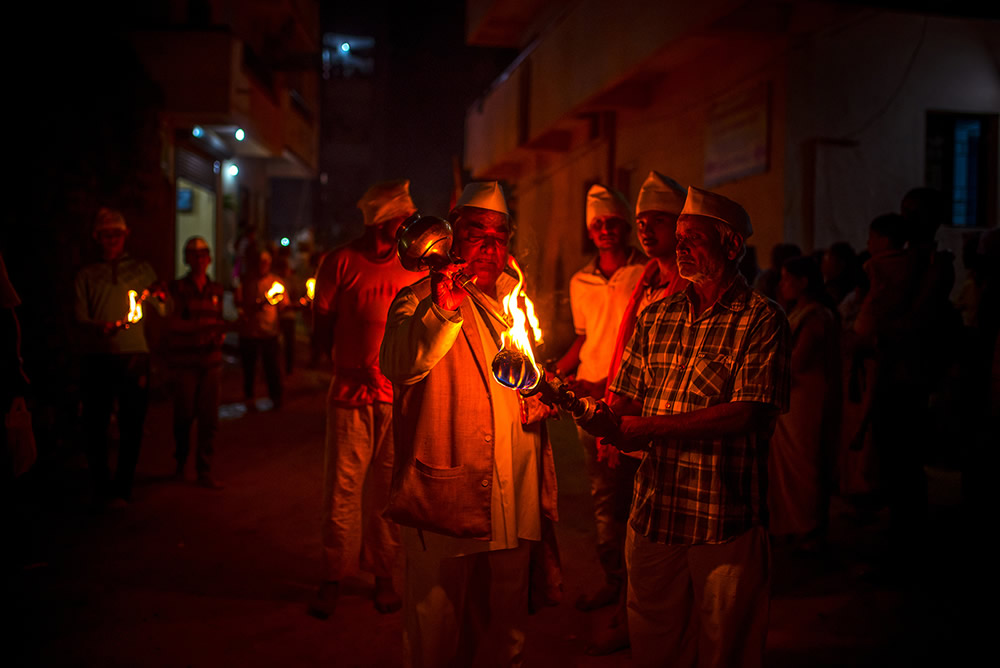
Importance of dogs in the festival:
In Jejuri, a dog has a lot of importance. The devotees pray not only gods but also the dogs which are present in the village. They believe that a dog is the most loved animal of their god and so there can be seen lots of statues of dogs in and around the temples.
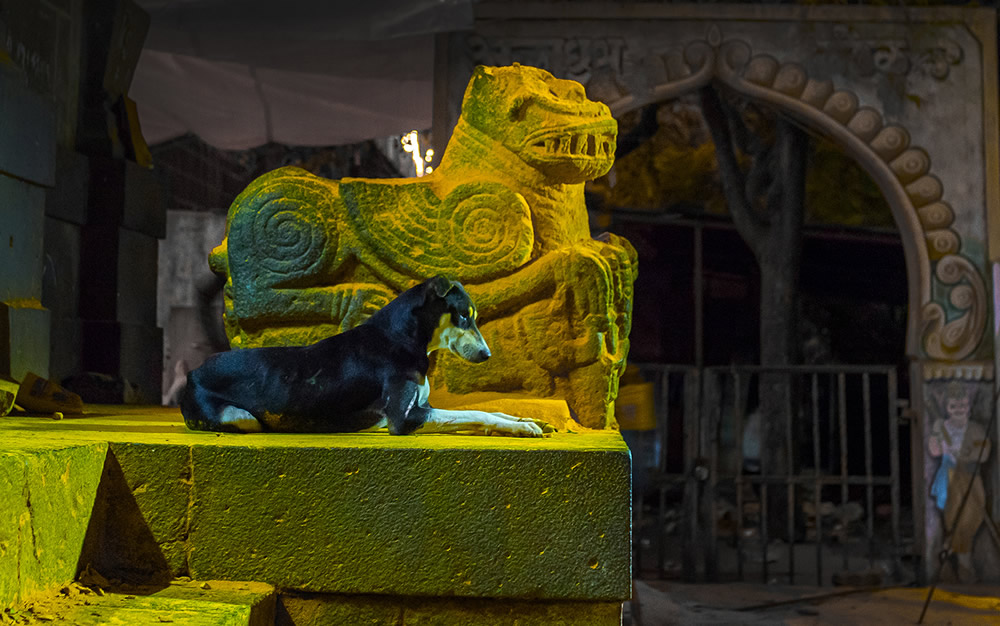
About Mahesh Lonkar
I am Mahesh Lonkar from Pimpri Chinchwad, Pune, Maharashtra. I have completed ‘Applied Art in Commercial’ from Government College which is a Fine Art equivalent degree.
I am an Amateur photographer. I’ve been doing photography since last 6 years. Culture and travel is the main subject of my photography. Profession wise I’m a ‘Visual Designer’. Now I am working for Tata Motor’s upcoming vehicles as a Senior Visual Designer with TATA Elxsi Design studio.
Now I am working on Maharashtrian Tradition and Culture. Mostly I am telling Culture stories through my photography subject. In the field of culture photography, I have been attending the Palkhi festival in Maharashtra for the last 6 years. In this standard, I attended various cultural festivals throughout India for photography. I have been honored in various national and international level photography competitions for my cultural photos.
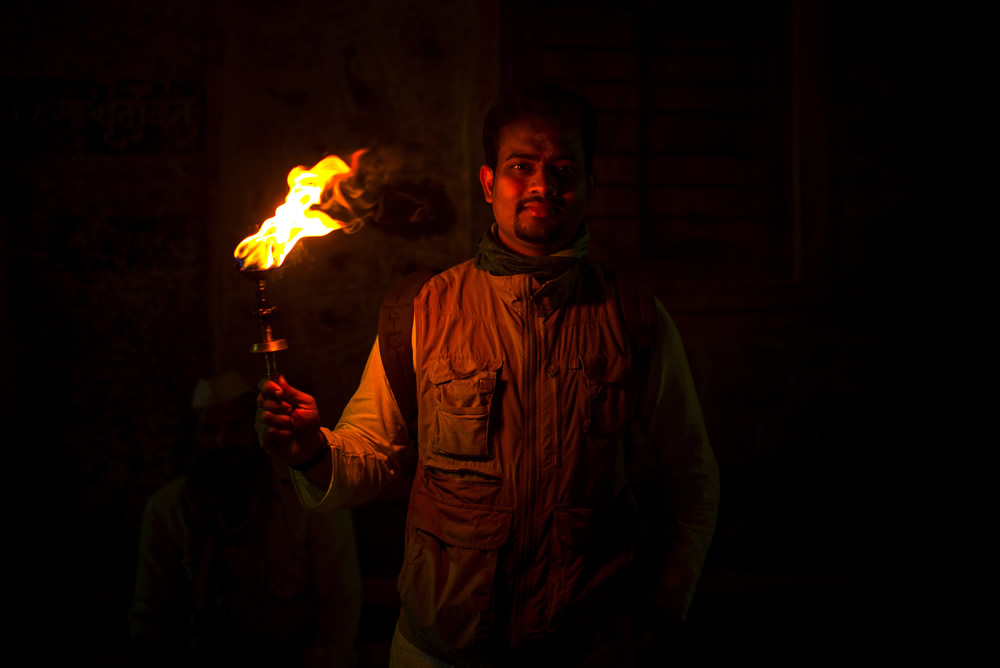
You can find Mahesh Lonkar on the Web :
Copyrights:
All the pictures in this post are copyrighted by Mahesh Lonkar. Their reproduction, even in part, is forbidden without the explicit approval of the rightful owners.

